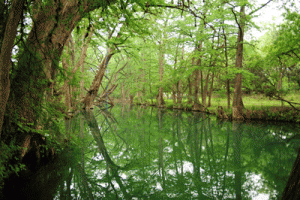New Park Information
Life in the park changes with the seasons, insuring that there is always something new to see.
Restoring the Parkland
The iconic native grasses visitors see on the path to the swimming area didn’t get into place by accident! One May morning in 2011, 3600 pots of switchgrass, big bluestem, native shrubs and much more were placed into the landscape by volunteers – Hays County Master Naturalist chapter members, Keep Wimberley Beautiful and Wimberley Boy Scout Troup 127 & Pack 127.
See the volunteers at work Planting the Park.
Restoration of native plant species, an essential element of the award-winning park design, continues. Plant the Park Days are held as the seasons and park needs dictate.
The Tree Project, with a goal to plant 250 native trees, is an active project. Donors may designate a $500 contribution for an existing significant tree or a new tree, and honor someone with their gift. For more information contact Susan Nenney, info@FriendsofWimberleyParks.org.
Birding
The Blue Hole Regional Park is a natural area of 126 lightly developed acres. The most prominent feature of the park is the spring-fed Cypress Creek with the “Blue Hole,” used for generations as a swimming hole and “cooling off” spot. The creek, lined with bald cypress trees, creates a great riparian area with good bird habitat and variety of food sources. Much of the creek and the 3.5 miles of trails traverse areas of native grasses. Wooded areas include large oaks, cypress, cedar elm, persimmon, hackberry and sycamores, attractive to many types of songbirds, including Eastern phoebe, Carolina chickadee, Northern cardinal, Ruby-crowned kinglet and more. Spring and fall are likely the peak birding seasons.
Winter: Blue-gray gnatcatcher; Orange-crowned warbler; Ruby-crowned kinglet
Summer: Summer tanager; Yellow-billed cuckoo; White-eyed vireo; Painted bunting; Scissortail flycatcher; Western kingbird
Spring: Yellow-throated vireo; Yellow-rumped warbler
Year Round: Eastern bluebird; Killdeer; Wood duck; Belted kingfisher; Carolina and Bewick’s wren; Western scrub jay; White-winged and mourning dove; Red-shouldered hawk; Ladder backed and golden fronted woodpeckers.
Find more detail on the park’s eBird Hot Spot
Bring your binoculars and a picnic.
